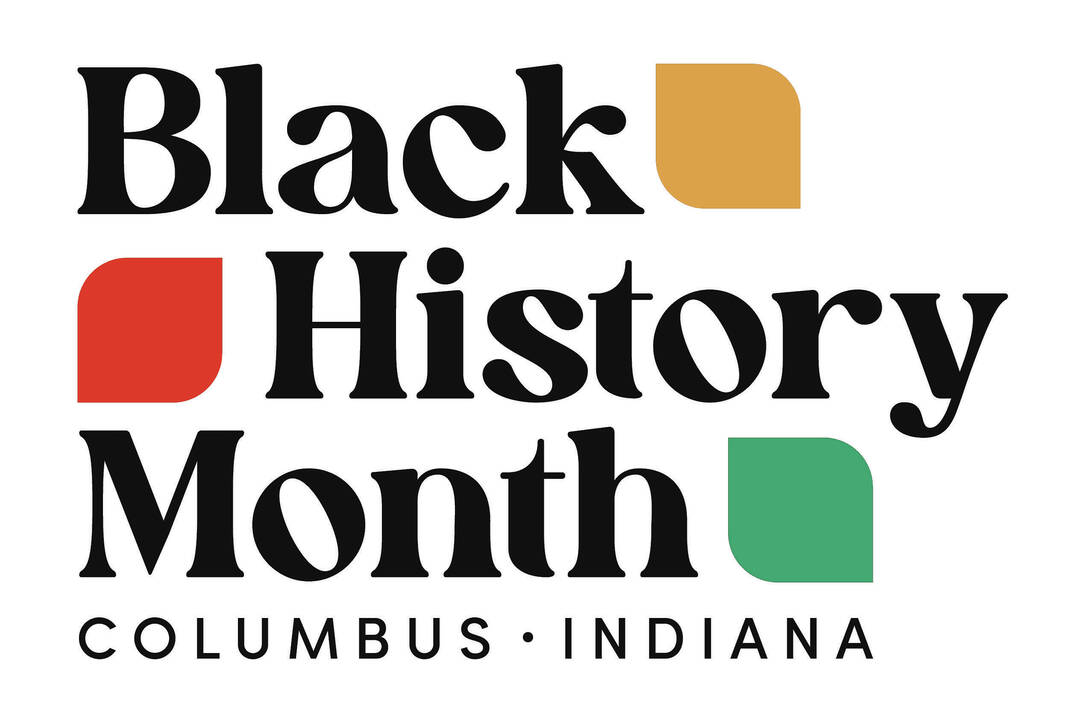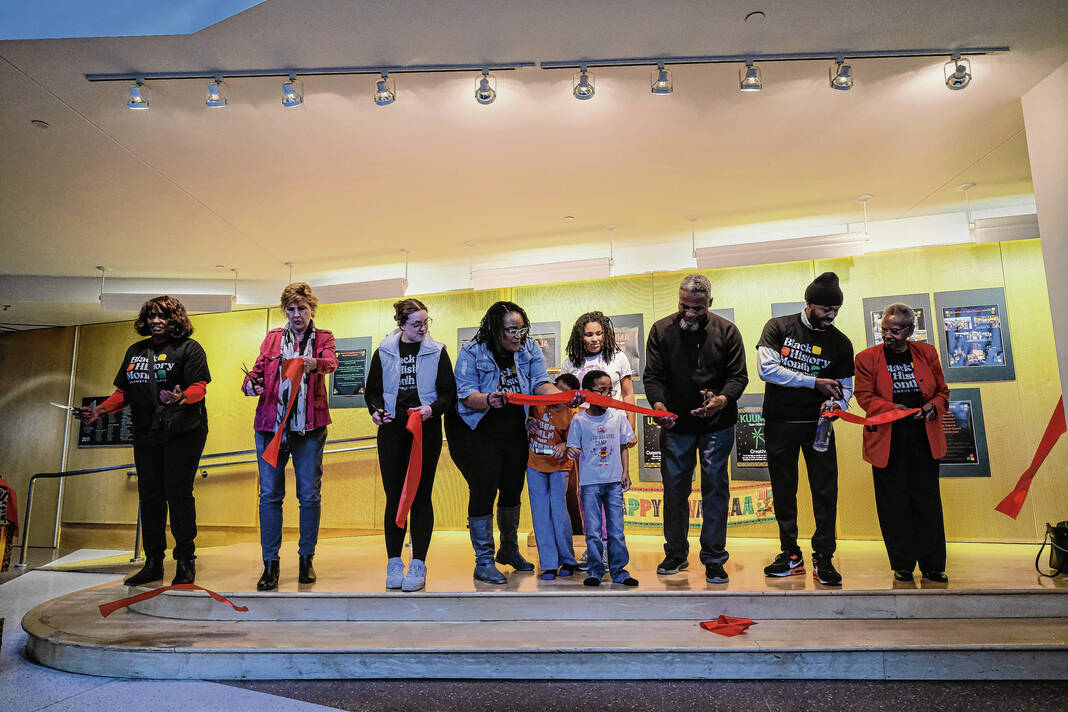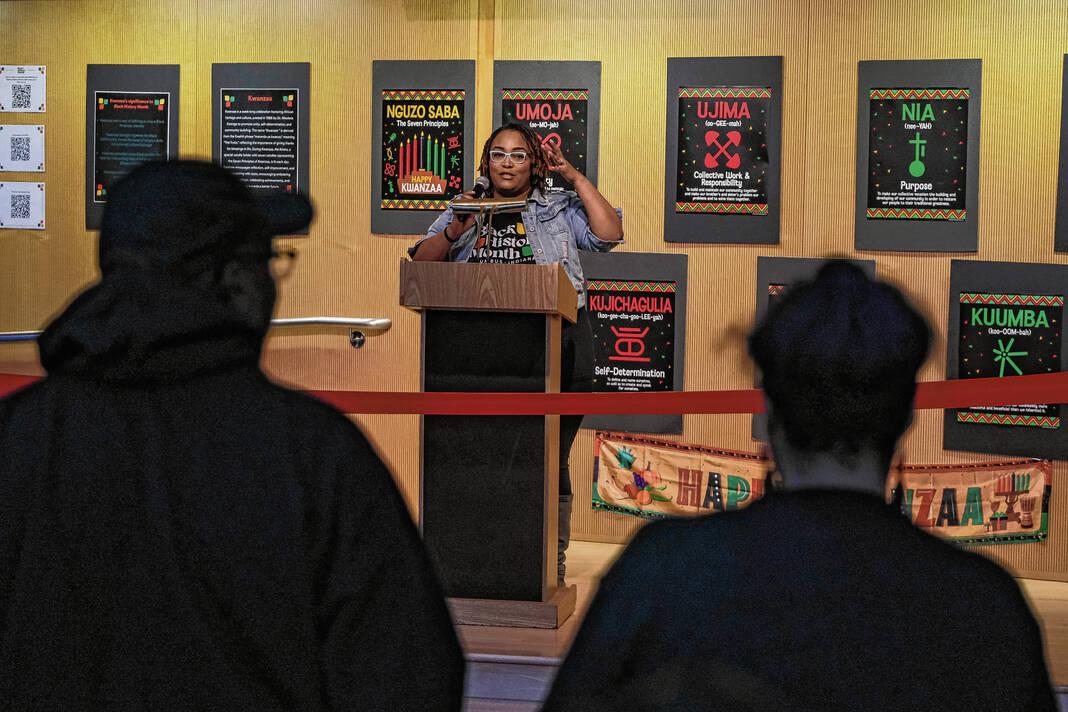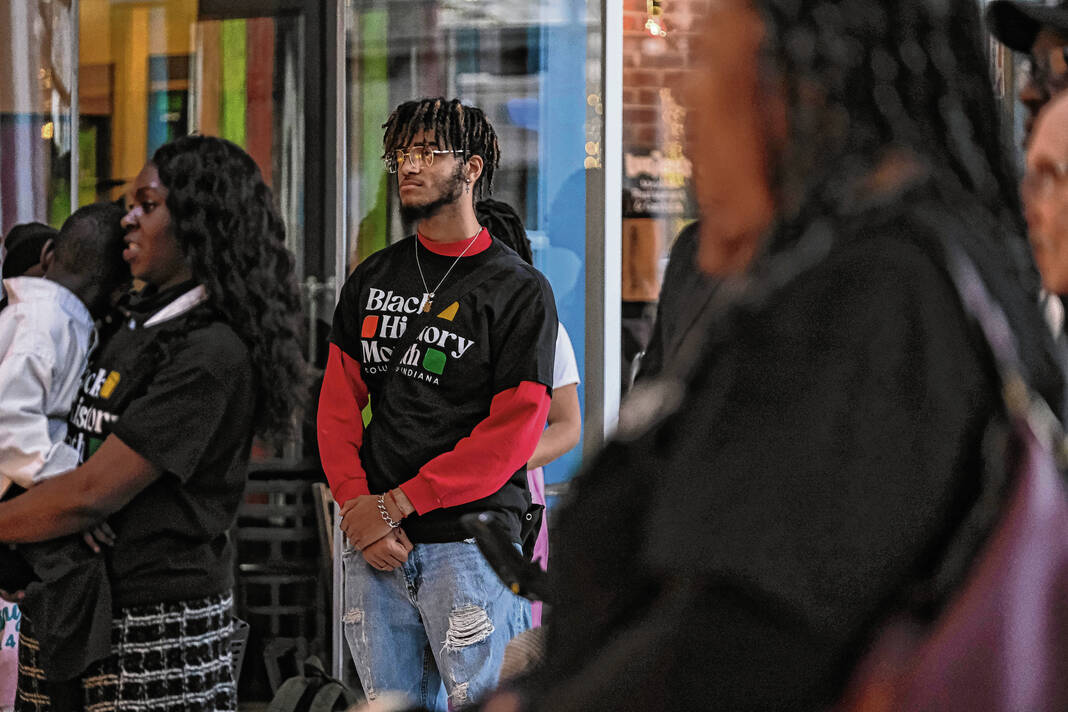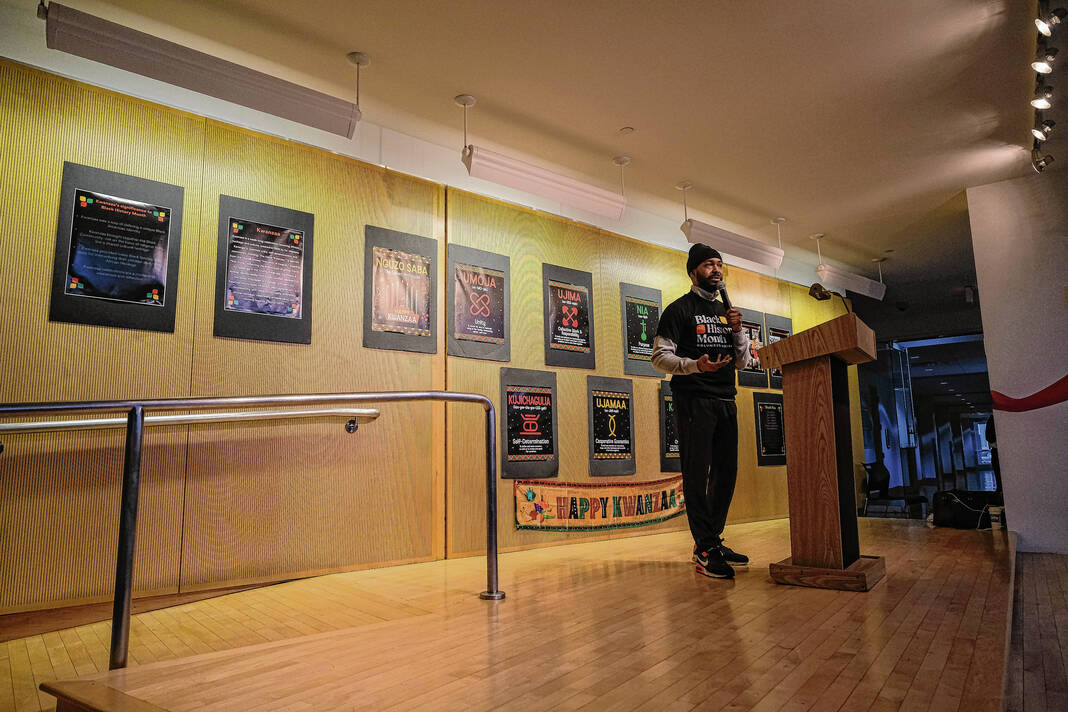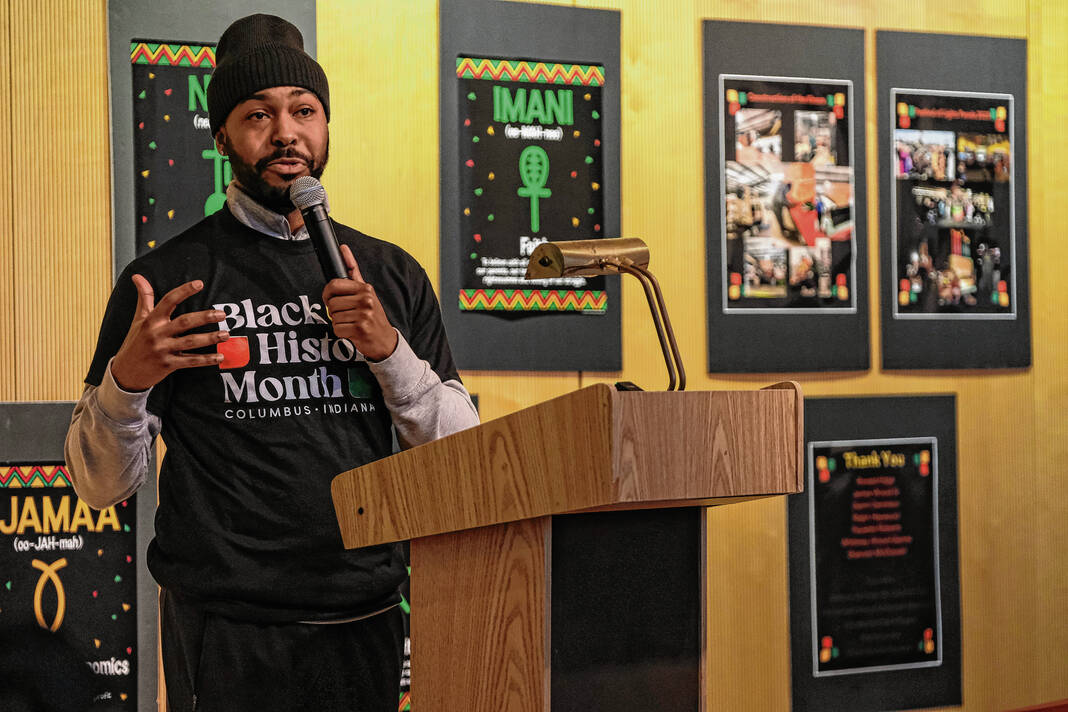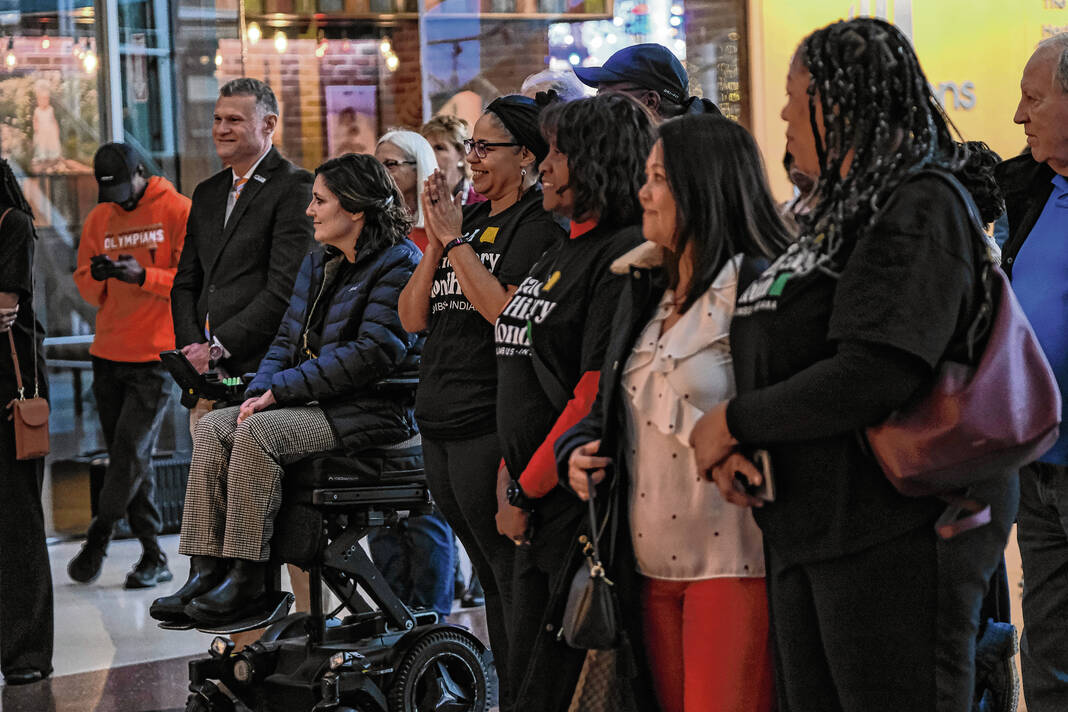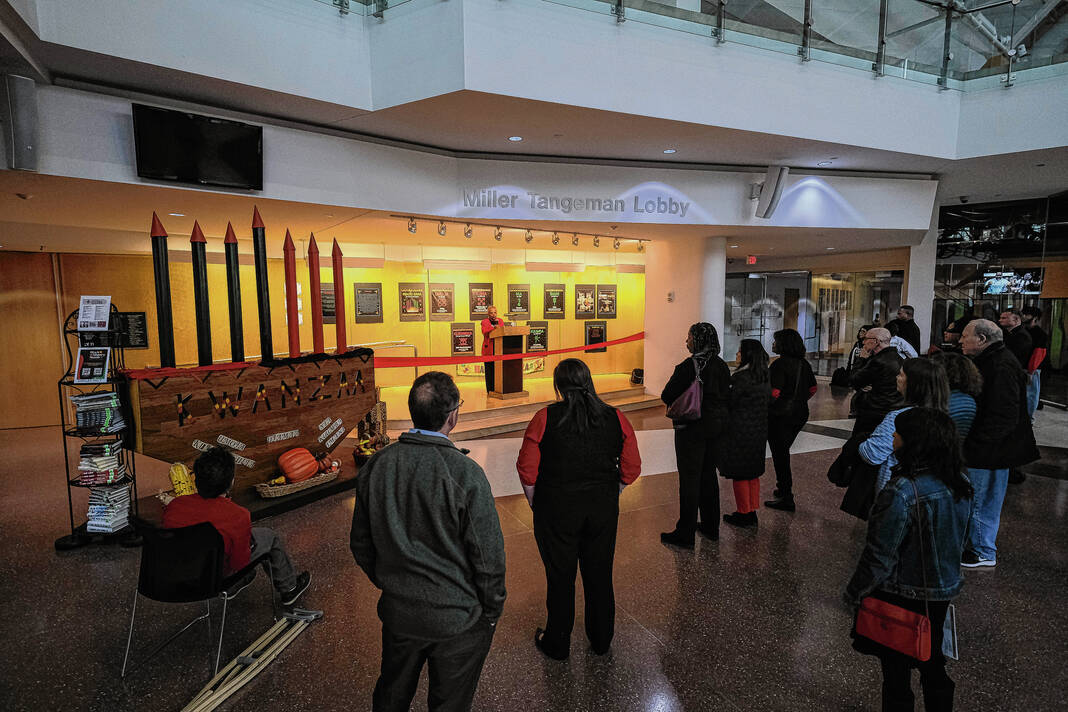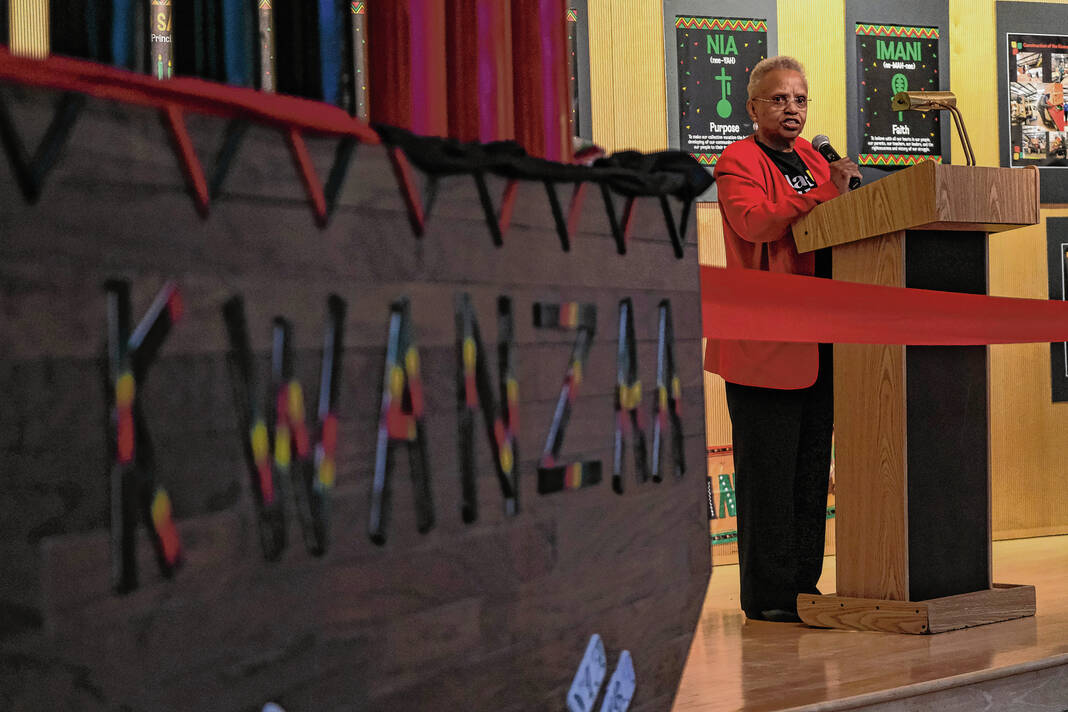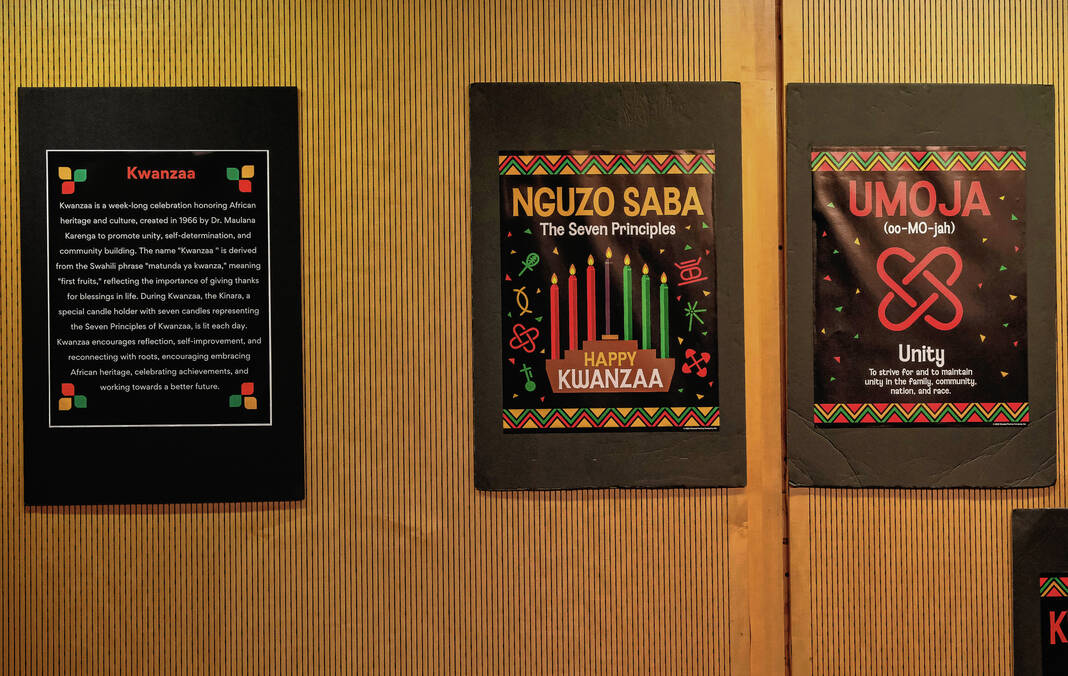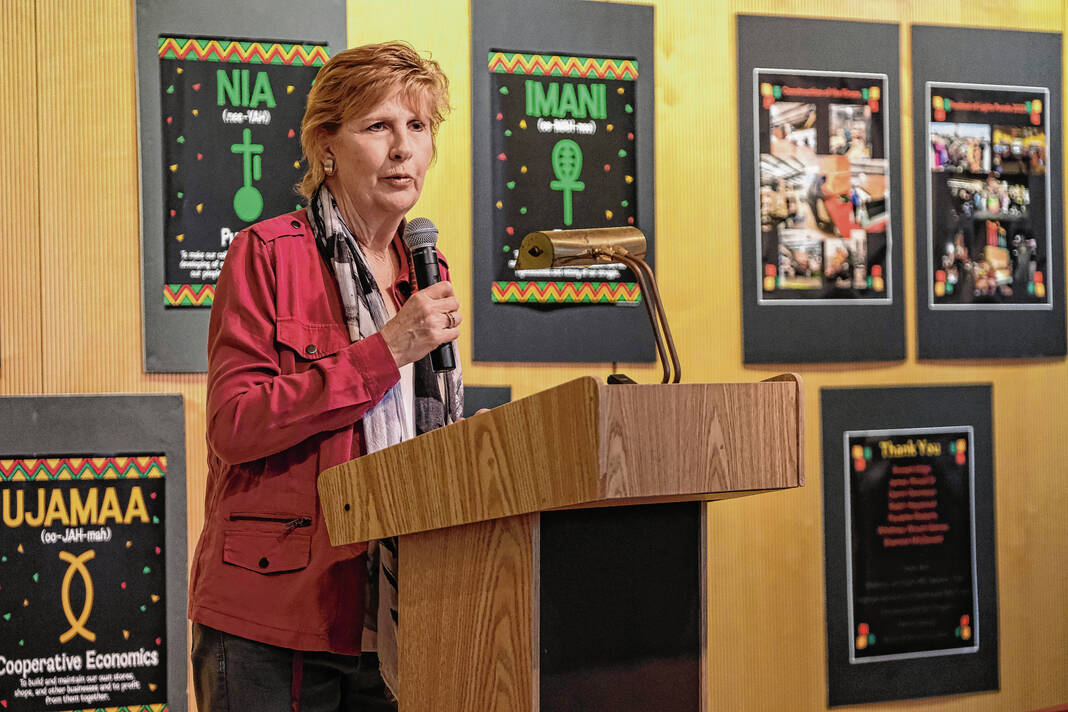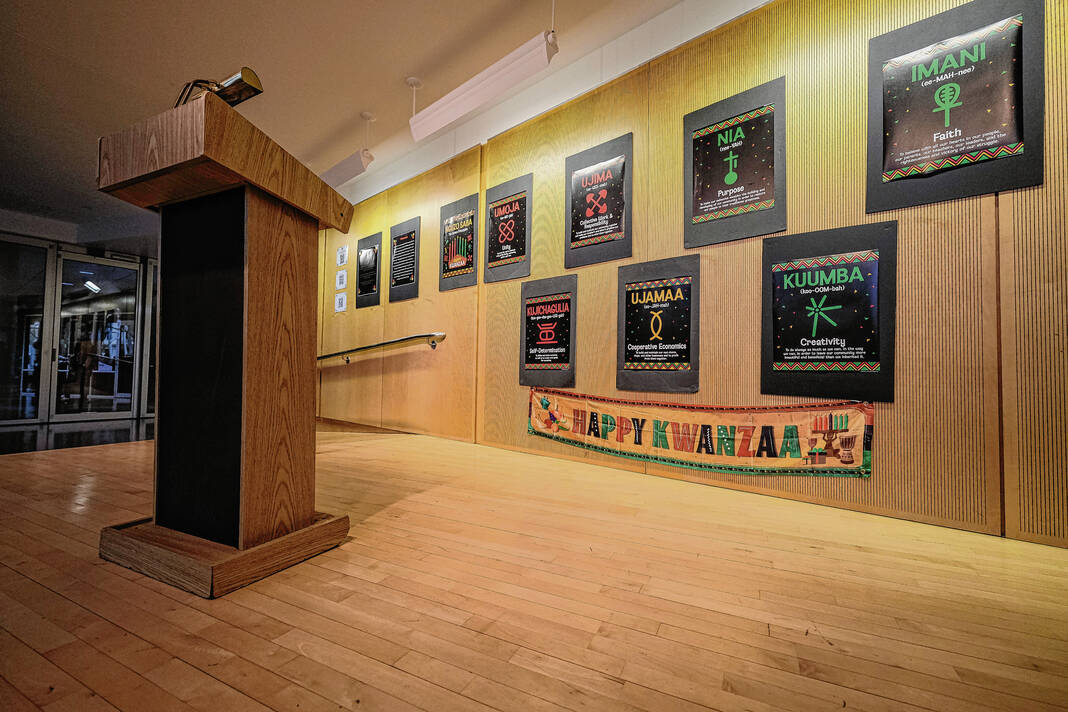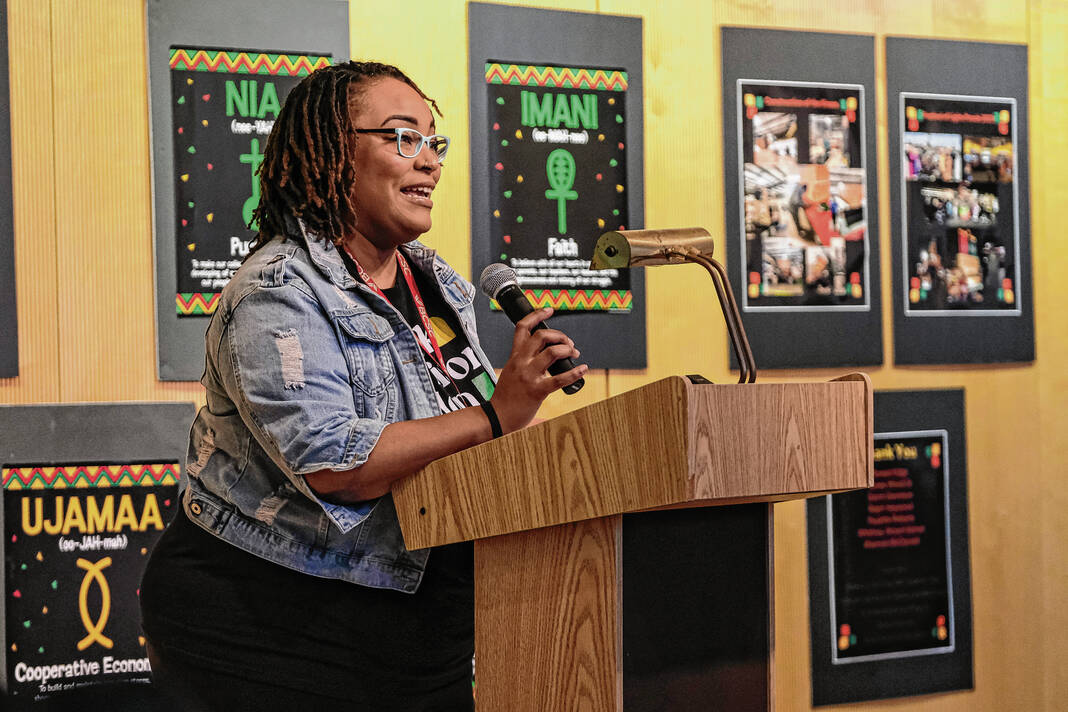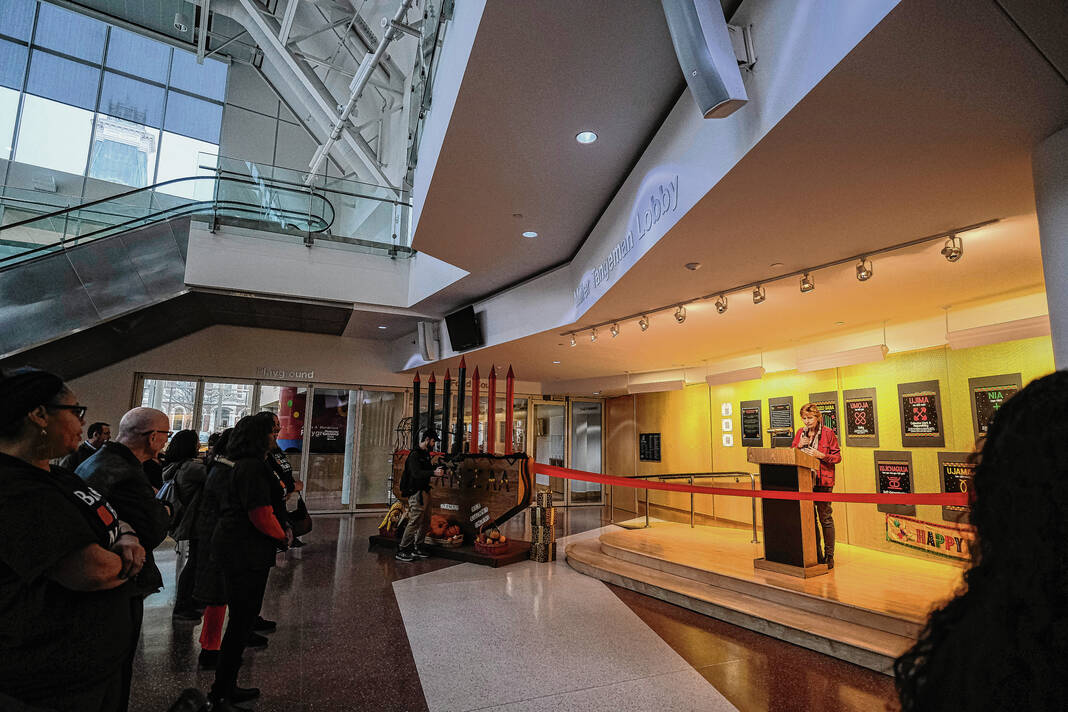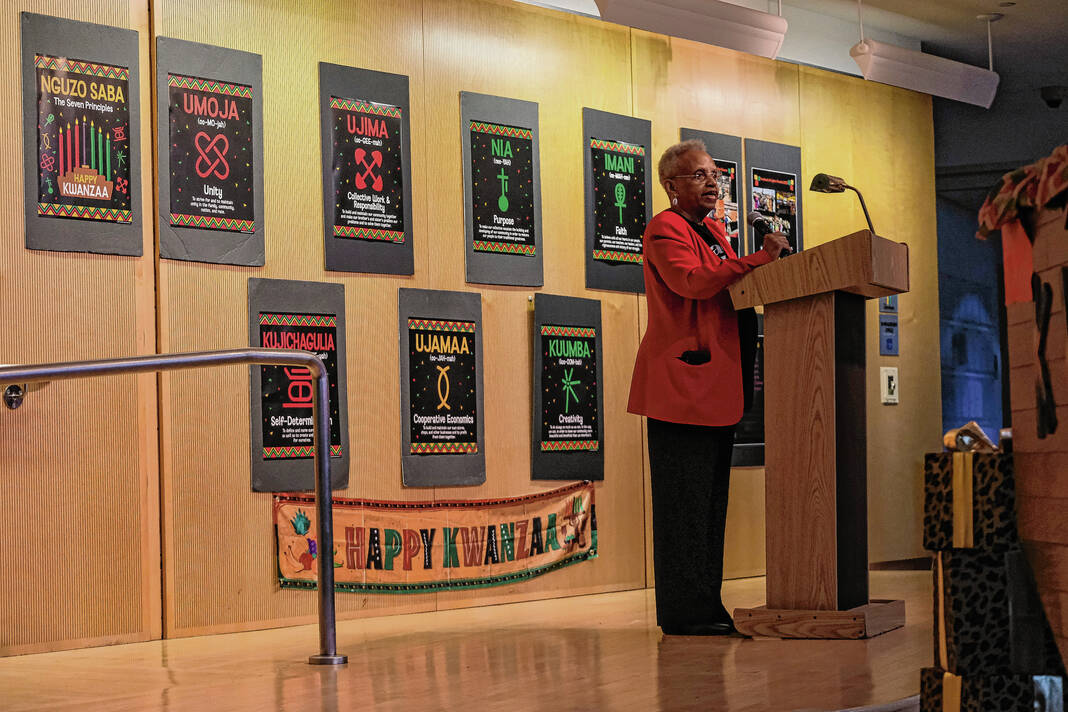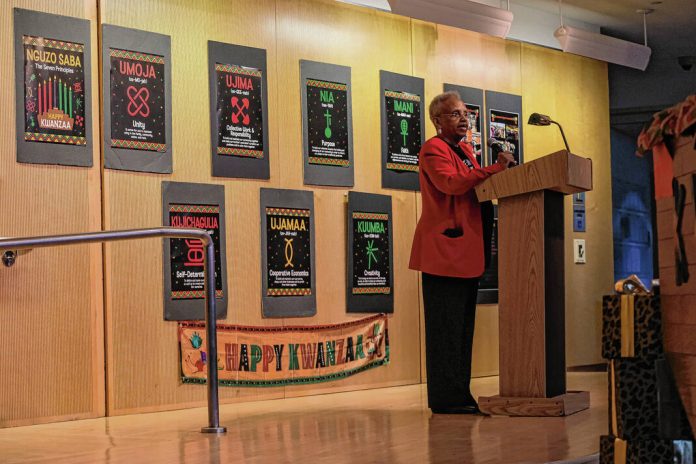
Mike Wolanin | The Republic Paulette Roberts talks about the history of Kwanzaa at the opening of the Kwanzaa exhibit for Black History Month at The Commons in Columbus, Ind., Thursday, Feb. 1, 2024.
At an event highlighting unity, Columbus City Council member Jerone Wood held to that theme Thursday afternoon as he helped officially kick off a wide-ranging Black History Month Columbus at The Commons downtown.
He was among speakers at the opening of the free exhibit “Umoja Unveiled: Kwanzaa” running all month. Umoja is Swahili for unity amid a holiday focusing on Black culture.
The exhibition includes a series of images explaining the seven principles of Kwanzaa, plus a hand-built display featuring its kinara candleholder.
When Wood looked it over, he liked the fact that he looked out on a gathering of about 50 people — Blacks, whites, Asians and others in a community he described as being known for diversity.
“It’s important to us, to Black people that look like me, to live in a city where we know that we can put on events like this, have a month of events, and we know that we have support, not just from our Black community, but from everybody that’s in our community,” Wood said.
He earned applause when he emphasized this month’s importance in awareness and more.
“Our kids are uninformed and uneducated on what Black history is,” said the teacher and coach. “And it’s not that we need a Black history course. We just need American history to represent us as well, because we are a crucial part of it, right?
“In a community where there isn’t a large black population, embracing Black History Month is very, very important.”
The website blackhistorycolumbus.com lists about 30 events — connecting to food, fashion, mental health, and the arts, t — that are a part of the month-long celebration. Most are free.
Whittney Gaines, who created the calendar with the help of a team of community volunteers and leaders, gushed about the city administration’s support for the effort last year and this year.
“I’m so excited to be here, year two,” she said.
The broader approach to Black History Month last year attracted the most diverse crowds in perhaps 30 years here.
Paulette Roberts, a retired teacher who as a speaker has highlighted Black history for years at community events, described Kwanzaa as a way “to empower African Americans to rediscover and honor their African roots. As we can see by the display, Kwanzaa highlights unity and joyful gathering. And Kwanzaa offers a unique opportunity to immerse yourself in the rich tapestry of African American culture and heritage.”
Bartholomew County’s Black population is just under 3 percent, according to U.S. Census Bureau figures. But community leaders have long said that events and programs benefiting Blacks and other ethnicities should be important to all people, no matter their race or heritage.
That idea is deeply rooted in Columbus’ leadership, and was evident even nationally when then-Cummins Engine Co. executive J. Irwin Miller helped with organizing the March on Washington in 1963 amid the heart of the civil rights movement. He and Cummins’ overall leadership also was among the first in the nation to not only strongly recruit Black employees, but to promote them to leadership roles.
Columbus Mayor Mary Ferdon spoke of the importance of heritage and diversity in reflecting history.
“It’s important to have as many narratives as we can,” Ferdon said. “Not because what is written (in history) is necessarily incorrect; it’s just often incomplete or skewed.
“So celebrating Black History Month better helps us write our narratives for Columbus and Bartholomew County.”
Another exhibit at the historical society
Residents can explore the rich history of the local African American community in two exhibits; “And Still We Rise” and “Soul of Philanthropy” currently at the Bartholomew County Historical Society, 524 Third St. in downtown Columbus. People can immerse themselves in the stories, achievements, and resilience of African Americans in the community, depicted through captivating exhibits that showcase their enduring spirit. Join us in celebrating the diverse narratives and contributions that have shaped our local history.

